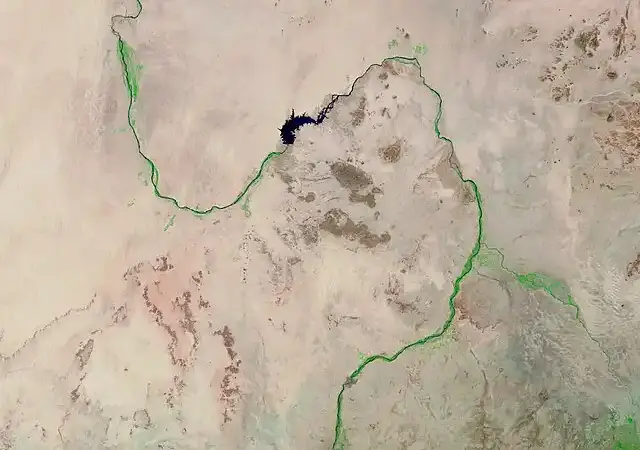Tsunami Survival Guide: Crucial Tip to Stay Safe
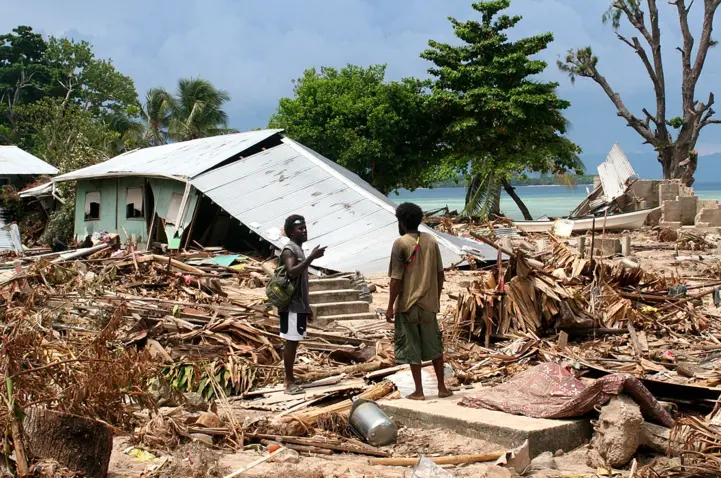
Natural disasters such as earthquakes and tsunamis are among the most serious events that any region on Earth can experience. With technological advances, it is now possible to obtain important and valuable information on how to act in the event of a tsunami. The "Tsunami Survival Guide: Crucial Tip for Staying Safe" is a useful and necessary guide for those living in tsunami-risk areas. In this article, we will present six subheadings that will help you understand the importance of preparing and acting properly in the event of a tsunami.
Show key points
- Understanding how tsunamis originate and the devastating consequences they can bring is essential for effectively recognizing and responding to the threat.
- Early warning systems, including local media alerts and mobile apps, play a critical role in ensuring timely evacuation and survival during tsunami events.
- Personal preparation, such as assembling an emergency bag with essential supplies and securing necessary documents, greatly increases the chances of survival.
- ADVERTISEMENT
- A well-thought-out escape plan that includes identified safe routes and communication strategies can make a life-saving difference during a tsunami.
- Knowing the safest places to seek shelter—such as elevated areas or sturdy, tall buildings—is crucial when a tsunami approaches.
- Taking immediate and structured action when facing high waves, including following official guidance and avoiding danger zones, is vital for minimizing risk.
- Continuous awareness, education, and planning empower individuals and communities to respond efficiently and protect lives during tsunamis.
1. Understanding a tsunami: devastating consequences and how a tsunami occurs
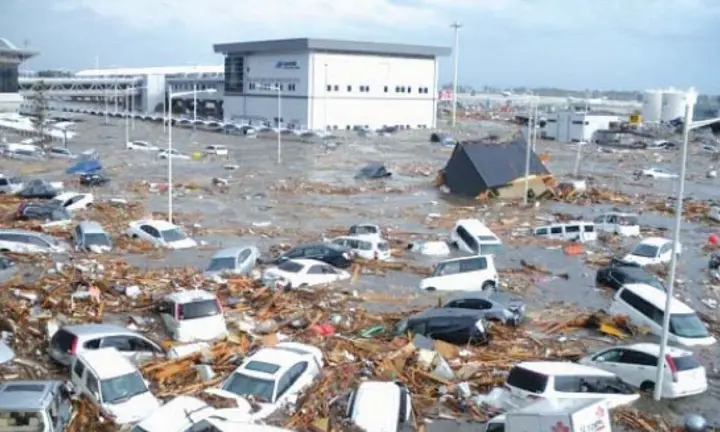
The tsunami, meaning "wave in the Gulf" in Japanese, is one of the most horrific and devastating natural disasters humanity can face. A tsunami occurs when the seabed displaces at a tremendous speed, whether as a result of the separation of the earth's crust in a particular underwater location or as a result of a strong earthquake. When the water pushes vertically upwards, giant waves form that threaten everything in their path.
Recommend
The devastating consequences of the tsunami include the destruction of property, human injuries, and loss of life. When a tsunami hits the coast, it sweeps everything in its path with tremendous force. Buildings collapse, vehicles sink, trees are swept away, and everything under their domination is crushed. The tsunami is one of the most frustrating disasters in rescue attempts and hampering medical and relief supplies.
Tsunamis usually occur in oceans and seas, especially in areas with frequent seismic activity. When an earthquake occurs with sufficient underwater strength, what is known as horizontal tectonic arises, in which part of the Earth's marine crust moves by up to several meters in a few seconds. When this happens, it causes massive tsunamis to form that rush towards the coast at tremendous speed.
Understanding the process of occurrence and effects of a tsunami is crucial to staying safe if it occurs. People should be fully aware of tsunami warnings and early signs that can indicate it is approaching. They should also know what actions to take when that natural disaster occurs. Only by understanding the tsunami process and its effects can individuals properly prepare and follow appropriate survival plans, increasing their chances of survival and minimizing potential losses.
2. Early warnings: how to detect and respond to tsunami warnings
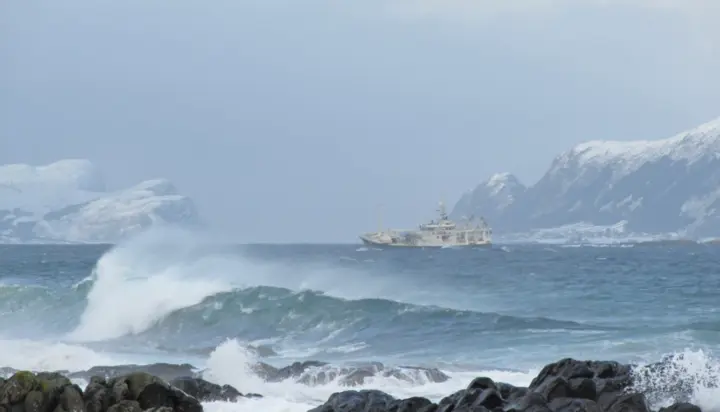
You are in a quiet location on the beach, enjoying the sunshine and the sound of crashing waves. But suddenly, you receive urgent warnings of an upcoming tsunami. What should you do? How can you detect and respond to these early warnings effectively? Let's explore together how you can achieve this successfully.
Early tsunami warnings are the first and foremost way to survive in the event of this devastating natural disaster. Advanced technology is available today to alert residents and give them early tsunami warnings, but in order to be able to take advantage of it effectively, there are some crucial tips to follow.
Learn about the local early warning system: In many tsunami-risk areas, there are local early warning systems that rely on a network of sensors and a nuclear bracelet (deep sea recording) to monitor earthquakes and determine the presence of a tsunami. Learn about these systems in your area and learn how to understand and interpret early warnings from them.
Follow local media regularly: Television, radio and other local media are an important source of information and early tsunami warnings. Be sure to follow these channels and websites and be up to date with all possible developments and warnings.
Download specialized smartphone apps: There are many applications available today that enable you to receive early tsunami warnings on your smartphone. Download and install trusted apps and adjust settings so that you receive instant notifications in the event of a tsunami threat.
Recognize local warning signs: In some places, certain tsunami warning signals are used and direct residents to safe areas. Learn these signals and make sure you know the designated asylum sites in your area.
Create a family tsunami action plan: Your family gathers to develop a solid tsunami action plan. Identifying pre-assigned asylum areas and defining individual roles and responsibilities will help you organize operations and move quickly and effectively.
Do not ignore any warning: you should take every tsunami warning seriously and take action without hesitation. Even if there is doubt or uncertainty, it is best to take the safe path and protect your life and the life of your family.
Early tsunami warnings are your chance to act quickly and stay away from the danger of a devastating threat. Depending on local information and the use of available technology, you can successfully achieve this. Always remember that surviving a tsunami requires caution, preparedness and quick action.
3. Personal readiness: the necessary equipment for survival
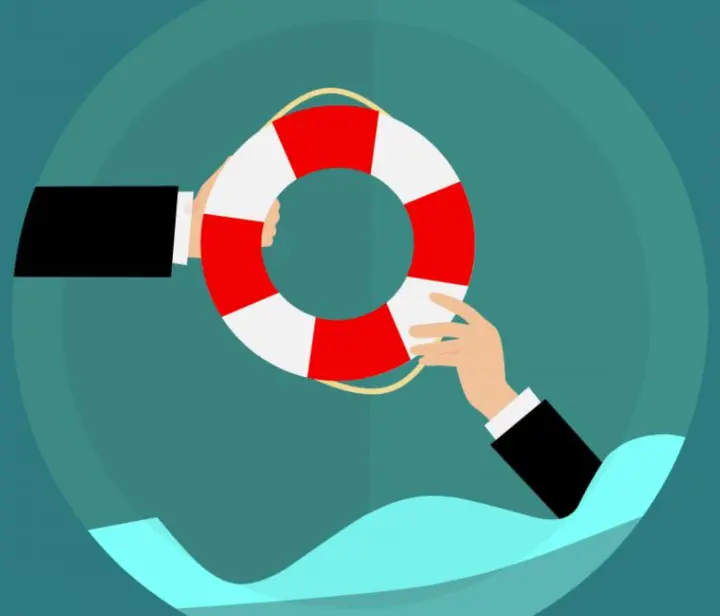
Personal preparation is one of the essential elements of survival in the event of a tsunami. When it comes to serious natural disasters, you must have a precise and well-equipped plan that contains the necessary equipment to face extreme situations. In this section, we'll review a set of necessary equipment you must have in your possession to survive in the event of a tsunami. Let's take a look at these equipment and prepare our hearts and minds for the challenge ahead.
First, the emergency bag:
The first thing you should equip is an emergency bag. Your bag should contain a range of essential items such as long-kept foods, clean water, essential medicines, flashlight, mobile phone backup charger, and basic survival kits. Pre-prepare the emergency kit and keep it constantly updated.
Second, the necessary clothing and equipment:
Make sure you have a good selection of clothing suitable for the weather and climate in your area. Buy a waterproof coat, shoes with a strong sole, gloves, a hat, and sunglasses. You may also need tools such as a knife, thread and needle, and duct tape.
Third: Identification Papers and Cash Money:
Put copies of important identification documents such as passport, ID card and health insurance in the emergency bag. Also, do not forget to put a sufficient amount of cash in case banking services are not available or access to an ATM.
Fourth, canned foods and water:
In addition to the emergency kit, prepare long-term food supplies such as canned and dried foods, chocolates, and prepared cereals. Be sure to update these supplies regularly to ensure their quality and validity.
Fifth, valuable documents:
Copy valuable documents and documents such as personal photos, contracts, and important records. Keep these copies in a safe and accessible place.
Sixth, Special Needs:
If there are family members or people with you who need special care, make sure to provide all their needs such as special medications, medical devices, and hygiene supplies.
With these necessary equipment, you can achieve peace of mind and full personal readiness to face any challenge you may face during a tsunami. Take the necessary steps to prepare and you will not only be a helpless witness in the event of a disaster, but you will also be able to stay safe and protect your family members.
4. Escape Plan: How to Plan to Escape Tsunami Areas Safely

A tsunami, this immense force of high waves, calls for rapid action and critical decisions to survive. In this subheading, we'll learn how to develop and successfully implement an effective escape plan to get away from the tsunami threat and stay safe. Let us delve into this important topic, defy circumstances and plan to win over this grave natural disaster.
Before the first word:
Before you start making an escape plan, we must learn about the potential risks and understand how a tsunami occurs. We will learn about the early warnings that are issued and how to monitor early indicators of a tsunami. Understanding the influencing factors and the first signs will help us move quickly and make the right decisions at the right time.
Advance planning:
Planning ahead is the difference between survival and death in the event of a tsunami. In this section, we will learn how to determine the optimal escape route and the safe areas that can be resorted to. We will also discuss how to avoid busy roads and stay in touch with rescue teams and close loved ones during the escape.
Necessary equipment:
In this part, we'll focus on what to prepare before a tsunami strikes. We will discuss what basic supplies should be in the escape bag and how to properly store the necessary resources. We will also learn about the importance of protecting important documents and personal items to preserve our identity and money.
Operation escape plan:
In this section, we will learn how to execute an escape plan smoothly and effectively. We will address the critical steps in the event of a tsunami and how to move quickly and effectively towards safe zones. We will also learn how to help others and work as a team to survive.
Safety Continuity:
After arriving in a safe area, we will learn about the importance of continuing to assess the situation and survive. We will learn how to appreciate damage, help others, and rebuild life after a tsunami.
Our safety is our responsibility:
We will conclude by noting the importance of promoting awareness and education on how to act in the event of a tsunami. We will talk about how to spread knowledge and awareness among individuals and the responsibility of society in developing capabilities for survival.
The plan to escape from tsunami areas depends on personal readiness and immediate response. Make critical decisions and act quickly and confidently. Remember, every moment we face, we defy circumstances and struggle to survive.
5. Safe places: How to know where to take shelter in the event of a tsunami
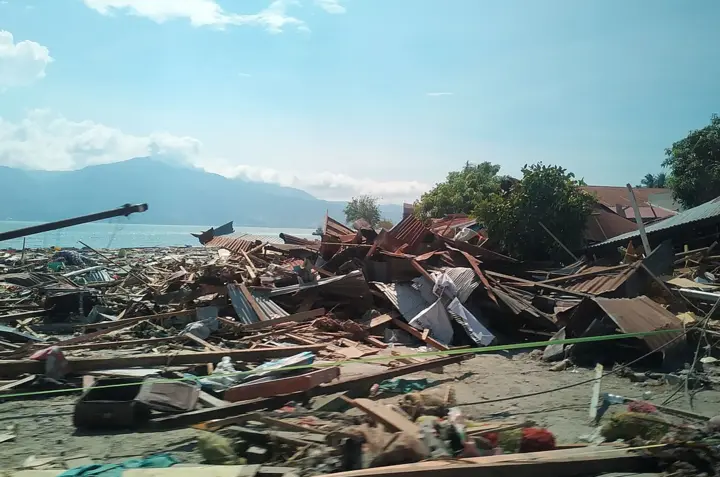
When a tsunami strikes, finding safe places of refuge becomes critical to keeping you and your life safe. Knowing safe places and making the right decisions at these crucial moments can be the difference between survival and danger. So, in this part of "Tsunami Survival Guide: A Crucial Tip for Staying Safe," we'll explore how to identify safe places to turn to in the event of a tsunami, let's get started.
First, learn about high altitudes: High areas are safer during a tsunami, where the destructive impact of waves is less at heights. Search for high areas in your area and identify them in advance as potential places of refuge.
Second, escape to buildings with upper floors: If you can't reach high areas in open areas, try to find multi-storey buildings with upper floors. The impact of destructive waves is less on the upper floors, so look for these places as potential points of refuge.
Third, stay away from the coast and rivers: Avoid staying near coasts and rivers during a tsunami, as the risk is increased in those areas due to cliffs and destructive flows. Keep a safe distance and stay away from these vulnerable areas.
Fourth, avoid indoor spaces: In the event of a tsunami, water can seep into low-lying and enclosed buildings quickly. Choose open and elevated places instead of closed buildings to avoid dangerous consequences.
Fifth, identify emergency exits: Before a tsunami, identify emergency exits and safe paths from potential buildings that may roam during a disaster. Be sure to know the highways to reach safe areas and avoid potential congestion.
Be sure to practice and do practical exercises to escape to safe places and learn about highways to get there. Don't wait to face the reality of the tsunami to learn, but prepare now until needed. Always remember that time is of the essence in the event of a tsunami, so stay away from vulnerable areas immediately and look for safe places for your asylum. Prepare well and be sure you have the knowledge to stay safe in the event of a tsunami.
6. Coping with the tsunami: critical actions to survive in the face of high waves
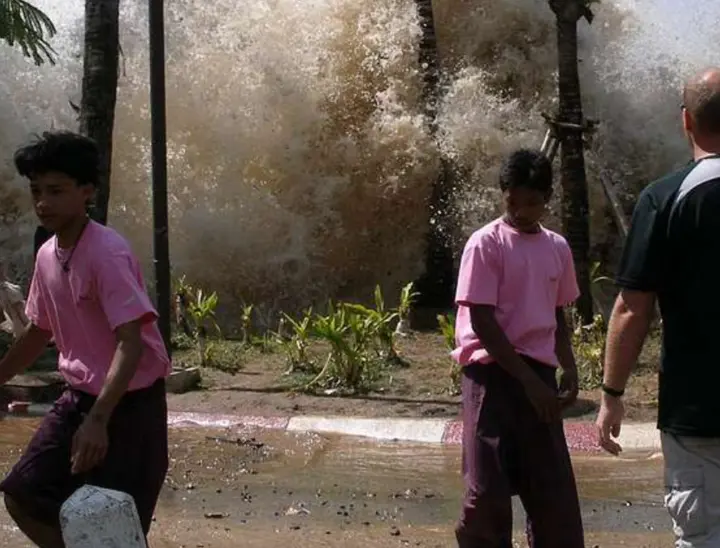
When individuals encounter a tsunami and find themselves facing high waves, proper handling is crucial for survival. In this section, we will explore the decisive actions that should be taken in the face of this immense power of nature.
First, when early warnings and signs of a tsunami arrive, individuals should call the nearest tsunami display point and take shelter there. These points may include mountainous heights or buildings that are specifically designed to cope with natural disasters. These predefined places should be identified as part of tsunami response settings.
Second, if there is not enough time to reach the tsunami display point, tall buildings or strong structures that can provide temporary protection from tsunamis and associated landslides should be sought. Avoid low-lying places or areas near bodies of water, where high waves may reach dangerous levels.
Third, individuals must be fully aware of the early warning system, guidance from local authorities, and continuous monitoring of news and information about the progress of the tsunami. Stay away from coastal areas and avoid traveling on roads parallel to the beaches.
Fourth, family members and loved ones should be contacted to ensure their safety and informed of the evacuation site and predetermined assembly point. Individuals must act cautiously and orderly during the evacuation process and organize boarding to designated locations.
Fifth, in the absence of a safe shelter or a specific tsunami viewpoint, high-ground points should be sought with vertical escape points such as large trees or sturdy buildings. Avoid parking near crumbling trees or potentially life-threatening objects.
Finally, once the first waves of the tsunami are overcome, you should stay away from low-lying areas and return to the high area as soon as possible, as subsequent tsunami waves may recur. Travel through bridges and collapsed roads should also be avoided and any problems with damaged roads or facilities should also be indicated to local authorities.
In the end, proper handling of the tsunami can be crucial to survival in the face of the tidal waves of this devastating natural disaster. Individuals should be aware of the potential risks and procedures needed to stay safe and protect themselves and loved ones.
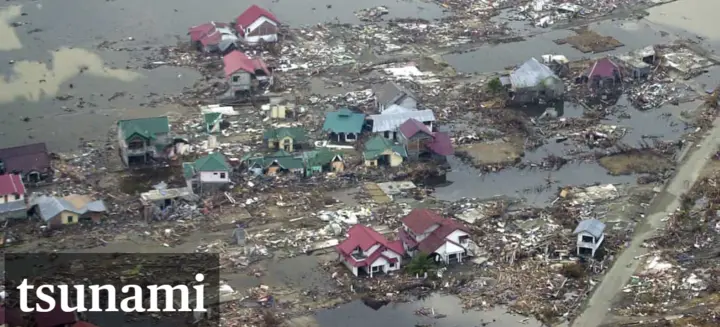
In the event of a tsunami, preparation and proper knowledge are the key to survival. By adhering to the advice and guidelines of the Tsunami Survival Guide, individuals can maximize safety and stay safe during this devastating natural disaster. So, feel free to check out this guide and share it with your loved ones and friends, as this can be the crucial difference between life and death in such difficult circumstances. Be careful, you are not alone in this battle, and you will successfully overcome the tsunami if you are prepared and highly aware.
![]()
Al-Ayjah Lighthouse and Castle in the city of Sur in the Sultanate of Oman
With its stunning coastal views and iconic Al-Ayjah Lighthouse, Tyre—also known as Sur—stands as one of Oman’s oldest and most captivating cities. Rich in maritime history, this ancient port once welcomed over 150 ships daily, bridging trade between continents and continuing to shine through its timeless heritage. more- ADVERTISEMENT
![]()
The Nile: Africa's lifeline and the longest river in the world
The Nile River, Africa’s lifeline, flows through eleven countries and supports over 450 million people. Its mysterious origins, vital role in agriculture, and the rising political tensions over water use make it a symbol of both unity and conflict, highlighting the urgent need for cooperation and sustainable management. more- ADVERTISEMENT
![]()
3 Important Novels You Should Read
3 Important novels that you should read more- ADVERTISEMENT
![]()
The Hundred Years War: A Comprehensive Overview
The Hundred Years' War reshaped England and France through fierce battles, bold claims to thrones, and shifting power. From iconic victories like Agincourt to Joan of Arc’s rise, this long conflict helped forge national identities and modern warfare, leaving a lasting mark on European history. more- ADVERTISEMENT
![]()
Why was Pluto kicked out of the nine planets?
Pluto, once the smallest and most distant planet, was removed from the solar system’s planet list in 2006 due to its tiny size, unusual orbit, and failure to meet new planetary criteria. Yet, Pluto remains a fascinating mystery, full of potential secrets that could reshape our understanding of the cosmos. more- ADVERTISEMENT
![]()
Artistic touches at Azadi Tower in Tehran Ira
Built from 8,000 pieces of Isfahan marble, Azadi Tower stands as a powerful symbol of Iran’s cultural revival. Designed by 24-year-old Hossein Amanat, it blends ancient and modern architecture, honors freedom, and reflects national pride—earning awards and a place on the 200-rial coin. more- ADVERTISEMENT
![]()
Real books prominent in self-development - including by an Arab specialist
Tired of theory-heavy self-help books? Try these three practical ones instead: Emma Bauer’s guide builds strong human connections with real-life tips, Mohamed Taha’s poetic book inspires change with depth and emotion, and Stéphane Garnier’s fun take shows how cat behavior can teach us joy, confidence, and better relationships. more- ADVERTISEMENT
![]()
7 physical cues that can help you read someone like an open book
Body language reveals more than words—handshakes, smiles, and even foot movements hint at confidence, stress, or honesty. A dominant handshake may suggest control; sincere smiles reach the eyes; fidgeting signals anxiety. Pay attention to these subtle cues, but always consider context—it's the key to truly understanding someone. more- ADVERTISEMENT
![]()
Global Solar Radiation: Regional Disparities and the Potential of the Middle East
Bathed in sunlight and embracing vast deserts, the Middle East shines as a global leader in solar energy. With over 3,000 annual sunshine hours, the region fuels innovation and growth, setting the stage for a bright, clean-energy future powered by the sun. more- ADVERTISEMENT
![]()
The importance of social communication for public health
The importance of social communication for public health more- ADVERTISEMENT













